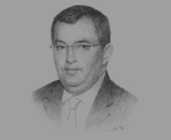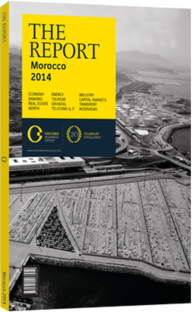OBG talks to Ali Fassi Fihri, Managing Director, Office National de l’Electricité et de l’Eau Potable (ONEE)

Interview: Ali Fassi Fihri
How will Morocco’s energy mix change to meet growing demand in the medium to long term?
ALI FASSI FIHRI: One of Morocco’s main challenges is how to meet increasing demand for electricity, which has grown at an average annual rate of 6.7% over the past decade. This trend results directly from the country’s socioeconomic dynamism, increased access to basic services and infrastructure, and the improved standards of living fostered under the National Initiative for Human Development. To meet such demand, ONEE has rolled out a medium- to long-term investment plan in line with the national energy strategy, which prioritises ensuring electricity supply, developing renewable energies and improving energy efficiency. The plan aims to add 4585 MW of capacity between 2013 and 2017 – 2090 MW of this based on renewables. This would increase productive capacity by 67% and includes clean coal power stations being developed in Jorf Lasfar, Safi and Jerada and the renewables projects foreseen within the Moroccan Solar Plan and Moroccan Programme for Wind Energy frameworks. Through these efforts, power production will become more diverse, with an increasing contribution of renewable sources. Wind energy will increase from 6% of total production in 2013 to 15% in 2017. Solar energy would jump to 6% of the power mix in 2017 and 14% in 2020.
What are your priorities for regional interconnection of electrical networks?
FIHRI: Morocco has acknowledged the important role it can play in regional power swaps. By developing electrical connections with Algeria and Spain, ONEE has positioned itself as one of the main players in the Maghreb and eurozone markets, and serves as a regional transit platform for cross-border electricity exchange. So far, the link to Spain via the Strait of Gibraltar is the only electrical connection between Europe and Africa. It was upgraded in 2006 to boost transit capacity to 1400 MW, and a study is under way to develop a third connection to take capacity up to 2100 MW. The first electricity link with Algeria, built in 1988, has been reinforced by two lines of 400 KW each in 2009 and 2010 to reach an exchange capacity of around 1400 MW.
Given its strategic assets in the form of interconnection infrastructure, Morocco plans to fully integrate its energy market with the European one, especially in electricity, through a streamlining process of regulatory and institutional frameworks based on EU standards. Another study is under way to develop an electricity link to Mauritania, to achieve regional integration of electrical networks within the South-South cooperation scheme. This project will allow the two countries to ensure the security and continuity of the energy supply, reduce production costs and enhance the energy resources of the two countries.
What has been the effect of liberalising power transportation in high-voltage grids?
FIHRI: The national energy strategy has been accompanied by a new regulatory framework promoting renewable energies. Law 13.09, first enacted in 2009, has liberalised the production of renewable energies connected to networks of high-voltage transportation and medium-voltage distribution. This has created a liquid market, which will allow consumers to choose their suppliers with negotiated, not regulated, prices.
Morocco’s high dependence on oil imports and the upward trend of oil prices mean that electrical production from renewable sources will become ever more competitive with conventional production, thanks to Morocco’s abundant resources and the gradual drop in investment costs for renewable energy projects worldwide. This will also guarantee better price stability in the medium and long term. Today three wind parks developed under Law 13.09 with a cumulated capacity of 200 MW already supply electricity to clients on the high-voltage grid. The Ministry of Energy, Mining, Water and the Environment is also doing a study on the modalities of liberalising renewable power production for the medium-voltage transportation grid.
You have reached the limit of premium articles you can view for free.
Choose from the options below to purchase print or digital editions of our Reports. You can also purchase a website subscription giving you unlimited access to all of our Reports online for 12 months.
If you have already purchased this Report or have a website subscription, please login to continue.

